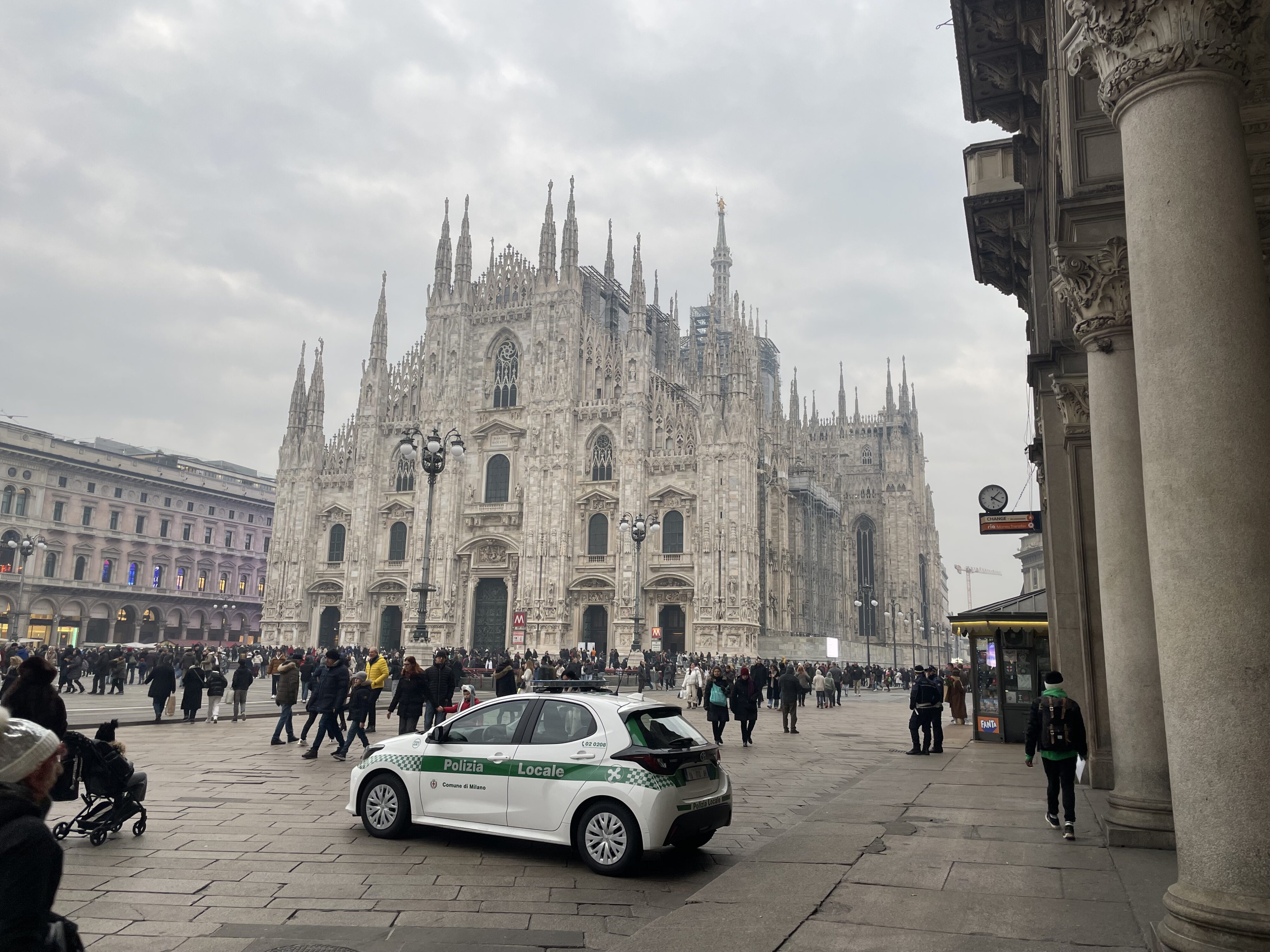
Max Garibay-Deasy

Max Garibay-Deasy
Milan, Italy is recognized as a global leader in design, art, and business. In the city’s bustling center, one can see Leonardo da Vinci’s Last Supper alongside the fashion houses of Prada and Giorgio Armani — all while cooling off with a cup of gelato.
But talk to the city’s residents and they’ll reveal a secret that will make you drop your spoon. Behind Milan’s glitz and glamor lies a difficult truth: The city suffers from the most polluted air of any EU metropolis, a status that threatens the city’s future.
Numerous factors make Milan vulnerable to elevated levels of air pollution. Italy’s second-largest city is home to much of the country’s heavy industry and agriculture. Both sectors produce substantial amounts of pollution from waste and burning. Milan is also situated in Northern Italy’s Po Valley, a low-lying area surrounded by mountains that trap dirty air. With a lot of pollution with nowhere to go, Milan’s unique economic and geographic features turn it into an air pollution pressure cooker.

Polluted air isn’t just a cosmetic issue. Valentina Bosetti, a professor of climate change economics at Milan’s Bocconi University, notes that air pollution can have a lasting impact on our mental and physical health. The World Health Organization (WHO) agrees, stressing that exposure to particulate matter can increase the risk of strokes and heart disease. The American Lung Association echoes these claims, while also linking air pollution to higher rates of cognitive impairment and Alzheimer’s.
It’s health concerns like these that compelled Anna Gerometta, founder of the Milan-based nonprofit Cittadini per l’Aria (Citizens for the Air), to push for change. As an adult, Gerometta recalls that she was aware of Milan’s air pollution but didn’t give it much thought. That changed when her daughter experienced dermatitis and allergies that worsened with exposure to Milan’s polluted air. Newly motivated, Gerometta threw herself into the issue of air pollution in Northern Italy and started Cittadini per l’Aria.
After founding Cittadini, Gerometta launched her groundbreaking NO2, No Grazie! (NO2, No Thank You!) campaign, one of the first air pollution citizen science projects in Italy. Gerometta began by gathering over 200 Milan residents — a process she described as “not easy” — and helped them place small air quality sensors near their homes, schools, and workplaces.
She then collaborated with researchers to transform the sensor data into moving visuals. Cittadini’s interactive maps show not just air quality, but also the estimated increase in hospitalizations, heart attacks, and other conditions expected due to pollution.
In 2023, the NO2, No Grazie! campaign exploded to 1500 volunteers across Italy, with a motto of sai cosa respiri? (Do you know what you’re breathing?) Gerometta’s success has won the support of international environmental organizations, with Patagonia and WWF Italy supporting her fight for clean air.
Despite Cittadini’s achievements, Gerometta notes that air pollution remains an “invisible issue.” Individuals can rarely see, smell, or feel particulate matter in the air — as a result, it’s easy to ignore. A generational divide also exists.
At a recent Cittadini event, several young activists discussed their decision to leave Milan because of concerns for their children’s health. However, the science surrounding air pollution has accelerated past the ability of researchers to communicate said science to people of all ages.
Professor Bosetti at Bocconi University has witnessed this gap firsthand. Bosetti is a leading climate change researcher, but she has often heard air pollution described as a “fifth-order problem.” She has since abandoned her air pollution research, describing the results as too depressing.
However, Bosetti notes that progress is possible towards cleaner air. Milan’s city government has already implemented notable changes: when air quality declines, the city introduces low emissions zones and lowers speed limits. But air pollution is not a tangible issue, and these measures have resulted in pushback from Italian citizens.
This three-way tug of war between activists, the government, and the public can make the issue of air pollution feel intractable. The success of the NO2, No Grazie! model lies in its ability to assemble disparate groups of people — including nonprofits, researchers, and citizens — to make a change.
In 2023, the city of Milan sponsored Cittadini’s data collection efforts. This raises the hope that the No Grazie! campaign will be used not just to inform and educate, but also to improve local policy.
Milan is a place that never stops running, as if the city is constantly indulging in Italian espresso. But at night, the city’s tension fades. It’s times like these that I ask locals how they feel about the air. It seems everyone knows someone who has moved away because of pollution.
Anna Gerometta’s activist friends have moved. Professor Bosetti lost a colleague who became fed up with long stretches of unhealthy air. I’ll leave this city eventually, too, as part of a cohort of young people leaving partially due to pollution.
We aren’t alone. From Mexico City to Lahore, India, air pollution represents an under-discussed threat to public health.
If what you see concerns you, talking to a friend or neighbor can help raise awareness. For those looking to make an even greater difference, the No Grazie! campaign offers a model as radically collaborative as it is impactful. It only asks us to consider a future of smog and respond: No, thanks. No, grazie.